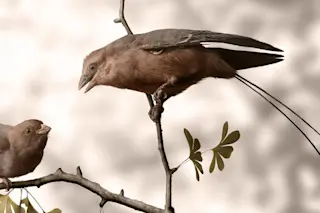Reconstruction of Confuciusornis sanctus by Stephanie Abramowicz, NHM Dinosaur Institute. Sue is something of a celebrity among dinosaurs, being the best-preserved T. rex fossil ever found. But in truth, the gender of dinosaurs is rarely, if ever, known. A study in 2005 first laid claim to a new way to sex dinosaurs using a distinctive bone formation. Now paleontologists in China have found that ancient birds also had this structure, confirming that birds and dinos shared similar gender divisions and reproductive habits. Researchers excavated the 125-million-year old birds' feathers, organs and bones from petrified lake-bottom mud in northeastern China. These birds, called Confuciusornis sanctus, were buried by the hundreds following catastrophic volcanic eruptions in the Mesozoic era. Some C. sanctus fossils have long, fancy feathers and some don't. Paleontologists have assumed the discrepancy in plumage was gender-based: the males were more decorated in order to attract and woo the drab-colored ...
Dinosaurs and Ancient Birds Shared Sex Traits
Discover how Confuciusornis sanctus reveals ancient birds' reproductive habits, linking them to dinosaurs and their gender distinctions.
More on Discover
Stay Curious
SubscribeTo The Magazine
Save up to 40% off the cover price when you subscribe to Discover magazine.
Subscribe













